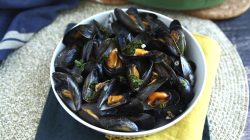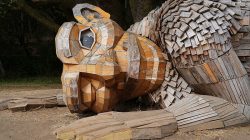The Allure and Dangers of Spanish Bluebells
Bluebells have a way of captivating us. They seem to dance in the breeze, brighten up shady corners, and announce the coming of spring with an almost magical cheer. For gardeners looking to start their landscaping early in the year, bluebells are a perfect choice, offering blooms that can last well into autumn. However, not all bluebells are created equal. Among these charming flowers is one that may appear innocent but carries hidden dangers—the Spanish bluebell (Hyacinthoides hispanica), also known as wood hyacinth.
Native to Spain, Portugal, and Northwestern Africa, Spanish bluebells might look harmless with their violet-blue blooms and elegant upright stems. But don’t be deceived. These flowers can quickly become a gardener’s nightmare. Once planted, they spread aggressively through seeds and offsets, taking over flower beds and invading surrounding natural areas. In regions like Virginia, New York, New Jersey, Georgia, and possibly Delaware, they can become invasive, causing significant ecological disruption.
In addition to their aggressive spreading habits, Spanish bluebells are toxic to both humans and pets if ingested. This makes them a particularly dangerous plant for households with children or animals. Gardeners should be aware of the risks and consider whether the beauty of these flowers is worth the potential harm they can cause.
Identifying Native vs. Invasive Bluebells
It’s essential for gardeners to understand the difference between native and invasive bluebell species. Native bluebells typically have narrower leaves, drooping stems, and flowers that hang gracefully from the stalk. In contrast, Spanish bluebells have broader leaves, upright stems, and clusters of flowers that surround the entire stem. Recognizing these differences can help prevent the unintentional planting of invasive species.
When planning your garden, it’s wise to avoid Spanish bluebells to protect both your yard and the local ecosystem. Their aggressive growth can lead to dense clumps that suffocate other plants, stealing light, space, and nutrients. Over time, they can overpower more delicate flowers and ground covers, reducing the diversity of your garden and threatening the balance of local plant life.
Ecological Impact of Spanish Bluebells
The impact of Spanish bluebells extends beyond just the garden. These plants can readily crossbreed with native bluebell species, potentially endangering rare local varieties. This hybridization can diminish valuable nectar sources for pollinators such as bees and butterflies. As Spanish bluebells spread, they reduce the diversity of plants in your garden, leaving fewer resources for birds, bees, and butterflies that rely on a mix of spring flowers.
This loss of biodiversity can transform a once-thriving garden into a uniform, lifeless patch of land. The result is not only an aesthetic disappointment but also a threat to the health of the local ecosystem.
Alternatives to Spanish Bluebells
If you’re drawn to the dreamy look of Spanish bluebells, there are plenty of beautiful, non-invasive alternatives to choose from. Virginia bluebells (Mertensia virginica) offer a soft, woodland charm and are an excellent source of early nectar for pollinators. Lungwort (Pulmonaria officinalis) provides delicate clusters of blue and pink flowers along with striking speckled foliage, making it a great addition to any garden.
These friendly options can help create a stunning spring garden while keeping it safe and inviting for both plants and pollinators. By choosing non-invasive species, gardeners can enjoy the beauty of blue flowers without compromising the health of their local environment.
Conclusion
While Spanish bluebells may appear attractive at first glance, their invasive nature and potential toxicity make them a risky choice for many gardens. Understanding the differences between native and invasive species, and opting for non-invasive alternatives, can help preserve the beauty and biodiversity of your garden. With careful planning, you can create a vibrant, thriving space that supports both your aesthetic preferences and the health of the local ecosystem.







